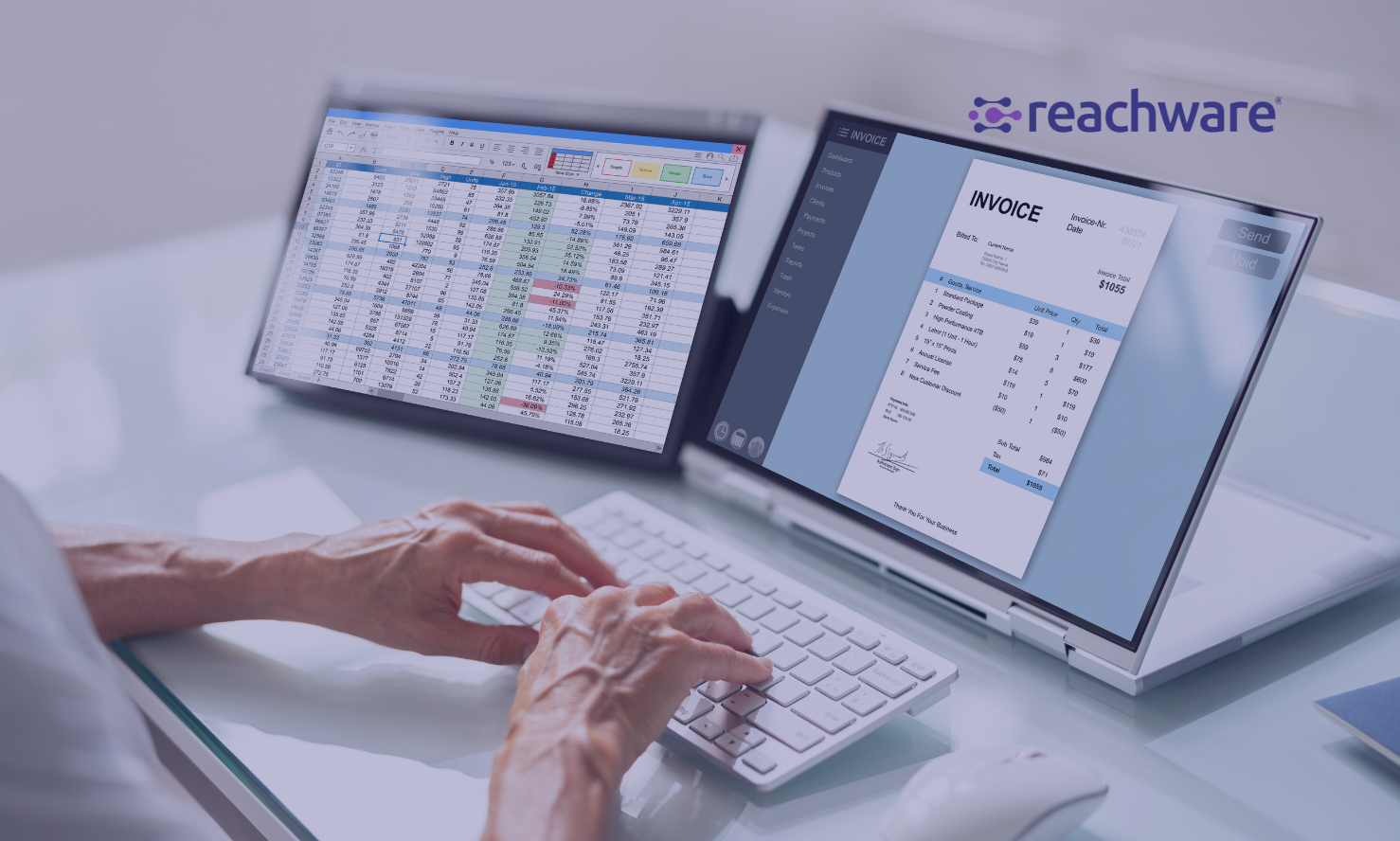How Real-Time Data Integration Helps Retailers Make Better Decisions?

Real-time data integration helps businesses make quick and smart choices. With solutions, retailers can improve their operations, manage inventory more effectively, enhance customer experiences, and boost profits. This is possible when they regularly share up-to-date information on sales, stock amounts, customer habits, and market trends. Reachware seamless integration enables stores to quickly respond to market changes, predict customer demands, and tailor their offerings. It even helps businesses make better decisions and stay ahead of competitors in a fast-changing market.
Introduction About Real-Time Data Integration
Real-time data integration is the process of collecting and updating information from various sources instantly, letting you access and examine it quickly. This connection also helps in updating information immediately when it's available. Hence, this will be allowing users to see the most current data. It's important for apps that need to make quick choices, such as in banking, healthcare, and online shopping. Automating data processes help the companies work more efficiently and react much quickly. Real-time data integration makes the processes more accurate and faster. This is important for companies that want to stay competitive in the current fast-paced, data-driven world.
Important Benefits of Real-Time Data Integration for Retailers
Enhanced Customer Experience
Real-time data helps the businesses gather and use customer information immediately. This will enable them to personalize the shopping experience. Stores can quickly offer special deals and recommend products. It changes prices by properly understanding what customers like, what they've bought in the past, and how they want to shop online. This customized approach makes customers happier, encourages them to stay loyal, as well as increases sales.
Improved Inventory Management
With real-time data integration, retailers can always check how much inventory they have in stores, warehouses, and online. This helps keep stock levels up to date, reducing the risk of running out of items or having too many. Having correct and current inventory information helps retailers know when to restock and what discounts to give, leading to better sales and less waste.
Better Supply Chain Coordination
Real-time data integration helps stores monitor their supply chain as it happens, improving cooperation between suppliers, distributors, and logistics teams. This clear understanding helps forecast events better, react swiftly to delays, and improve shipping and delivery. Retailers can make their operations better by quickly adapting to changes. This helps reduce wait times as well as improves the efficiency of their supply chain.
Data-Driven Decision Making
Retailers can use live data to make better decisions. By studying current sales patterns, customer behaviours, and operational information, businesses can quickly and accurately adjust their strategies. Knowing the latest market news, customer preferences, and competitor activities helps retailers spot opportunities and avoid problems.
Can Real-Time Data Integration Improve Inventory Management?
Yes, using real-time information can greatly improve inventory management. It combines information from sales, warehouses, and supply chain systems. This way, you can see how much stock is available, how products are selling, and what the demand trends are right now. Hence, this helps stores manage their stock better, avoid running out of products, and cut down on extra items. Real-time data helps change orders and stock levels quickly, so inventory is kept at the right amount to meet customer needs. By using current information, retailers can make faster choices, improve their operations, and lower costs. This helps them manage their inventory better.
Real-Time Data Has a Huge Impact on Customer Service in Retail
Real-time data improves customer service in retail by offering quick information about what customers like, what they need, and any problems they might have. Retailers can use this information to give specific ideas, special deals, and quicker answers to customer questions. Having real-time information on stock levels and order status helps customer service teams give correct and current updates, which improves the customer experience. Retailers can quickly spot and fix problems like late orders or things being out of stock, which helps keep customers happy. Real-time data merging helps customer service teams provide faster, more effective, and personalized support to customers.
Challenges Do Retailers Face When Integrating Real-Time Data
Data Silos and Fragmentation
One of the biggest problems retailers have when using real-time data is that their information is separated between different tools and teams. Data can be saved on different platforms like point-of-sale (POS) systems, inventory management, customer relationship management (CRM) tools, and online shopping websites. Without smooth integration, it’s hard to reach and join this data quickly, resulting in scattered information. This fragmentation makes it difficult for retailers to see their processes clearly. Hence, this hampers their ability to make accurate and timely choices.
Complex Technology Infrastructure
Using real-time data needs advanced technology, like cloud computing, APIs, and data streams. Many small businesses find it hard to use old systems that don't work well together or allow for real-time contact. Upgrading or removing old systems can be expensive, take a lot of time, and disrupt normal business activities. Making sure that new technologies work well together can be tricky, especially when it comes to compatibility and keeping data uniform.
Data Quality and Accuracy
For real-time data merging to be effective, the data must be reliable and of high quality. Bad data can lead to poor decisions, unhappy customers, and financial losses. Retailers may find it hard to clean, organize, and check data from various sources before they can join it right away. It's important to keep data correct to prevent errors in inventory, pricing, or customer service.
Security and Privacy Concerns
Real-time data integration increases the amount of important customer and company information that is processed and shared across different platforms. This raises concerns about data safety and privacy. Retailers need to ensure their data tools are secure, comply with regulations, and are safe from internet dangers. It's important to use strong security methods, like encryption and access control, to keep data safe when combining different systems.
What Are the Security Risks of Real-Time Data Integration?
Retailers need to handle security risks linked to real-time data merging to protect private information. One big risk is data leaks. Real-time interaction shares a lot of data between systems, which can create chances for hackers to strike. Weak security can let unauthorized people access information, exposing customer data, payment details, and business processes to danger. Another risk is losing data, especially when transferring it between different sources during a merge. If this information isn't saved properly, it could be lost or harmed. Using real-time data can increase the risk of internal threats, where employees might accidentally or knowingly compromise data security.
Is Real-Time Data Integration a Good Fit for Small Retailers?
Real-time data integration can benefit small businesses, but it depends on their specific needs and available resources. It can help manage inventory and improve customer service, but the costs and technology requirements may be too high for smaller businesses with limited budgets and equipment. Small retailers can now use cheap cloud services and other tools to quickly access real-time data and enhance their business operations.
Conclusion
Using up-to-date information helps businesses get what they need to adapt and thrive in a fast-changing market. With solutions like Reachware, retailers can improve by making fast decisions, working smarter, and connecting better with customers. Leveraging this technology is crucial for companies that want to stay competitive and achieve their best in today’s retail environment.
Frequently Asked Questions
Is real-time data integration suitable for small retailers?
Yes, small businesses benefit greatly from real-time data integration. It helps them manage their stock, understand their customers, and make choices.
How real-time data integration supports Omni channel retailing?
Real-time data integration retailers to offer a cohesive Omni channel strategy and meet customer expectations more effectively.
Can real-time data integration enhance online retail performance?
It helps online stores understand how customers behave, handle their stock better, and quickly adjust their marketing strategies. This leads to a better customer experience and higher sales.
How do retailers ensure data accuracy?
Retailers can keep their data correct by using trustworthy sources, checking their systems regularly, and using better methods to verify the data. Real-time tracking helps quickly find and fix any mistakes.
What is the future of real-time data integration in retail?
The future of real-time data integration in retail looks promising because of advancements in AI, machine learning, and robotics that support better decision-making.


























